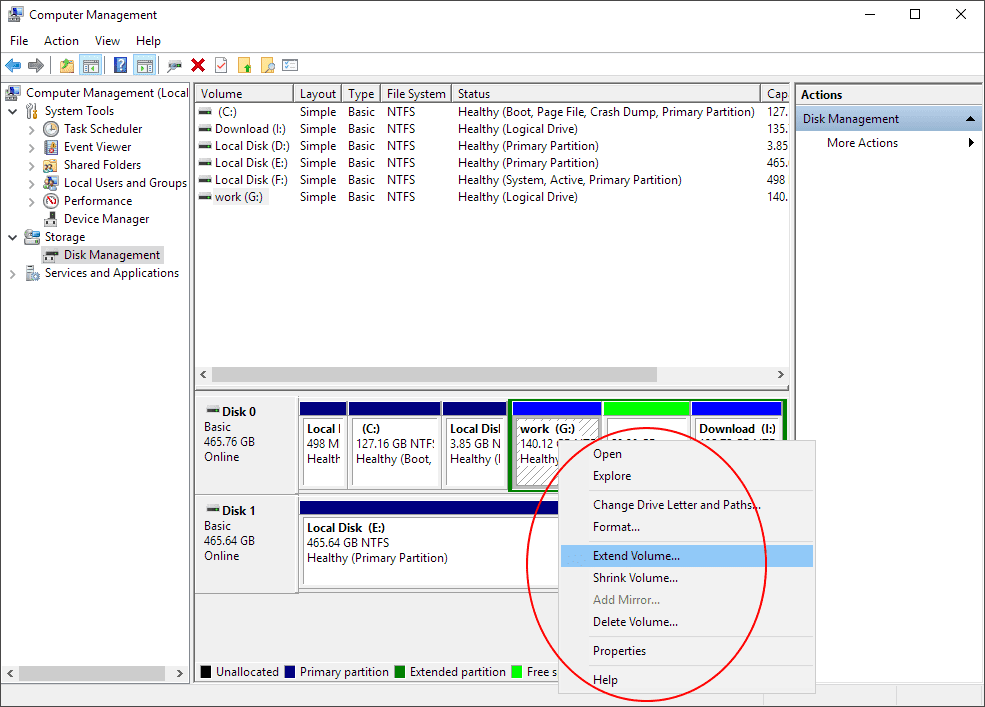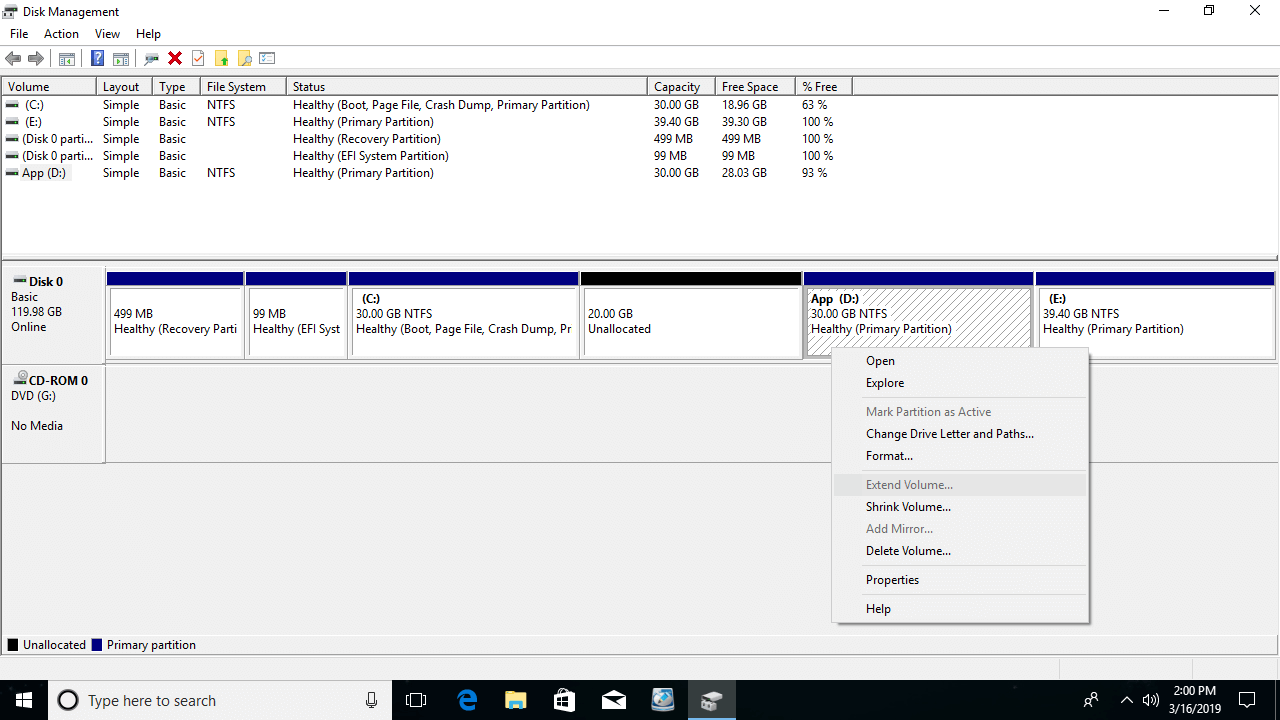

If the volume you want to extend is busy, it’ll reboot your PC, then extend it before Windows boots up. To help you through this, try the free version of MiniTool Partition Wizard. If the volume you want to extend is the one on where you installed Windows, there’s a chance that you won’t be able to extend it using Disk Management because the volume is busy. Next, follow the steps under my previous heading (Utilising Unallocated Space) to add that unallocated space to the partition you’re extending. Right-click the volume you want to shrink (for me, that’s the sizeable “F:” volume), and click “Shrink Volume.” Enter the amount of space you want to add to your partition (15GB in my case), then click “Shrink.” You’ll return to the Disk Management screen and see a big black block of unallocated space. You just need to shrink the volume where you want to grab some storage space, then put the newly unallocated memory into the partition you’re extending. Moving Space from One Partition to Anotherīut what if you don’t have unallocated space and need to steal some storage space from another partition? No problem. Seeing as I have about 3GB of unallocated space on that hard drive, I’m going to put it all into the partition I want to extend.Ĭlick “Next,” then “Finish”, and after a moment you should be back in the Disk Management window, now showing your newly expanded partition. First, let’s pour all that unallocated space into “D.” To do this, right-click the volume you want to extend – “New Volume (D:)” in my case – and click “Extend Volume.”Ĭlick through the wizard until you get to the “Select Disks” screen, then in the “Select the amount of space in MB” box, type how much space you want to add to the partition, bearing in mind the maximum available. If the partition you want to extend isn’t the one on which you’ve installed Windows, then the process is simple.

We’re going to extend volume “D” from around 2GB to 20GB. We’ll be focusing on Disk 1 where you can see that I have a large partition (F:) along with a smaller one (D:) and about 3GB of unallocated space.

The picture shows you my Disk Management situation (and reminds me that I really need to get another hard drive). In the Disk Management window, you’ll see information about all your hard drives, their partitions, and how much space you have on each. First of all, you’ll want to assess your disk space situation by having a look in “Windows Disk Management.” To do this, click the Start button, type disk, then click “Create and format hard disk partitions.”


 0 kommentar(er)
0 kommentar(er)
